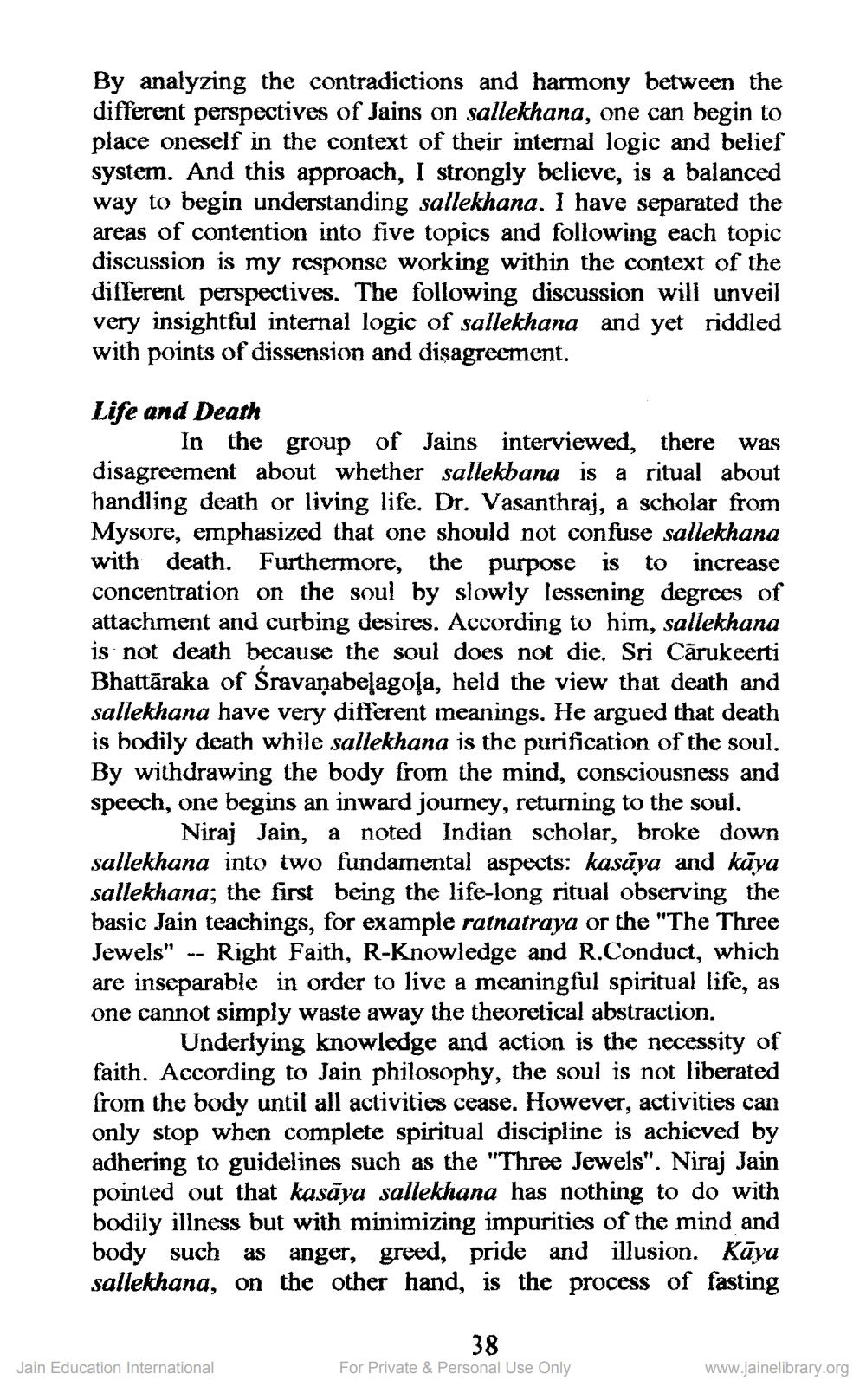________________
By analyzing the contradictions and harmony between the different perspectives of Jains on sallekhana, one can begin to place oneself in the context of their internal logic and belief system. And this approach, I strongly believe, is a balanced way to begin understanding sallekhana. I have separated the areas of contention into five topics and following each topic discussion is my response working within the context of the different perspectives. The following discussion will unveil very insightful internal logic of sallekhana and yet riddled with points of dissension and disagreement.
Life and Death
In the group of Jains interviewed, there was disagreement about whether sallekbana is a ritual about handling death or living life. Dr. Vasanthraj, a scholar from Mysore, emphasized that one should not confuse sallekhana with death. Furthermore, the purpose is to increase concentration on the soul by slowly lessening degrees of attachment and curbing desires. According to him, sallekhana is not death because the soul does not die. Sri Cărukeerti Bhattāraka of Sravanabelagola, held the view that death and sallekhana have very different meanings. He argued that death is bodily death while sallekhana is the purification of the soul. By withdrawing the body from the mind, consciousness and speech, one begins an inward journey, returning to the soul.
Niraj Jain, a noted Indian scholar, broke down sallekhana into two fundamental aspects: kasāya and kāya sallekhana; the first being the life-long ritual observing the basic Jain teachings, for example ratnatraya or the "The Three Jewels" -- Right Faith, R-Knowledge and R.Conduct, which are inseparable in order to live a meaningful spiritual life, as one cannot simply waste away the theoretical abstraction.
Underlying knowledge and action is the necessity of faith. According to Jain philosophy, the soul is not liberated from the body until all activities cease. However, activities can only stop when complete spiritual discipline is achieved by adhering to guidelines such as the "Three Jewels". Niraj Jain pointed out that kasāya sallekhana has nothing to do with bodily illness but with minimizing impurities of the mind and body such as anger, greed, pride and illusion. Kāya sallekhana, on the other hand, is the process of fasting
38 For Private & Personal Use Only
Jain Education International
www.jainelibrary.org




